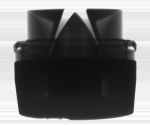This is a new thread that picks up on the discussion of active crossovers in the 4345 - 3 way project thread over on the Lansing DIY forums.
https://www.audioheritage.org/vbulle...-with-JBL-2447
https://www.audioheritage.org/vbulle...l=1#post442634
Given this new thread is a technical reference l have posted it in the Technical Help Forum.





 Reply With Quote
Reply With Quote



